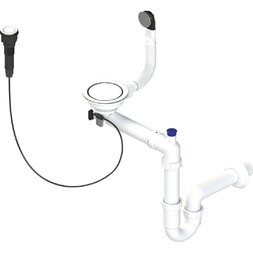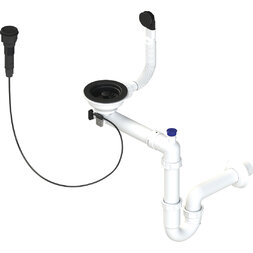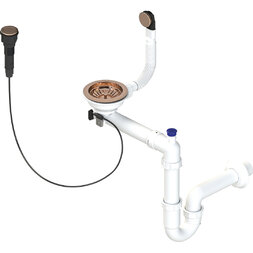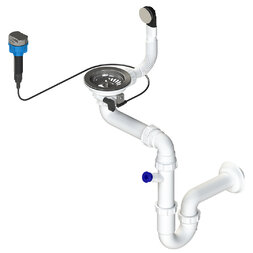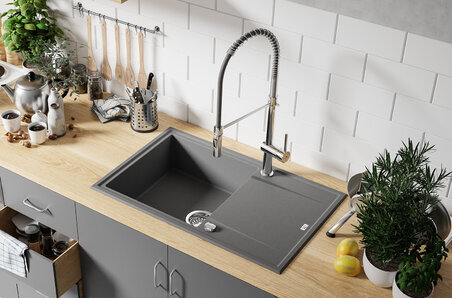Sinks are sometimes confused with washbasins, where the term “sink” is used both for kitchen and bathroom equipment and the term “washbasin” is reserved for the bathroom. Below, however, we would like to present the most popular types of kitchen sinks.
![]()
A sink is usually placed in a line of furniture between the fridge and the cooker so that meal preparation can be organised as conveniently as possible. To make your kitchen more ergonomic, it is worth considering a corner model that will occupy the least used worktop section, i.e. in the corner of the wall where different pieces of furniture come together. What sink colour and shape you choose is purely a matter of taste. Rounded or rectangular; beige, grey, black, inox or gold - they will all prove equally practical. Before you buy one, however, it is important to find out what types of sinks are available and what they can offer their users.
Kitchen sink construction is presented here >>>
Material
The most popular sinks in the market are
steel and
granite models. They are available in the broadest range of shapes, sizes and colours. Steel sinks seem very light while granite ones are associated with solidity.
![]() Steel sinks
Steel sinks are usually made of 304 stainless steel that is considered the most hygienic and durable material - used also to manufacture surgical instruments. This steel type is durable enough to enable such sinks to be only a few millimetres - or even less than a millimetre - thick. Thanks to its chromium and nickel content of no less than 18 and 8 percent respectively, combined with its low carbon content (up to 0.08 percent), 304 steel is characterised by resistance to corrosion and oxidation. Grade 304 is also resistant to food products, dyes and many types of organic and inorganic chemicals.
In the case of steel models, it is worth paying attention to the surface type, as they come in smooth and linen, i.e. with a rough canvas-like texture, versions. Both types have almost identical resistance properties (high temperatures up to 250 degrees Celsius, thermal shock, discolouration & stains), but the decor version is considered slightly more resistant to scratches and therefore recommended for kitchens where a lot of cooking takes place.
![]()
Popular
granite is a mixture of quartz and resin, which, when properly composed, result in a ductile and resistant material. Granite sinks are cast from a mould, and a properly conducted production process makes them resistant to thermal shock, temperatures up to 250° Celsius, scratches, discolouration, stains and impact. They have a smooth surface and all the patterns and embossing result mainly from their utility function - they are meant to drain water quickly and efficiently, though at the same time they may increase the aesthetic value of the products.
Both sink types have loyal groups of fans. Consumer research shows that the vast majority of customers choose exactly the same material when replacing a sink. Only the sizes, shapes and colours change.
For a comparison of steel and granite sinks, visit >>>However, the market is not limited to those two materials. Kitchen sinks are also made from ceramic which is mainly associated with the bathroom. Due to their glazed surface, such models are easy to keep clean and are scratch-resistant, but they can be broken by a heavier item dropped inside. A dozen or so years ago, many kitchens came with enamelled sinks which, having taken more modern forms, are still available in shops. Their advantage is a smooth, slippery surface from which dirt can easily be removed. Unfortunately, such models are prone to scratches and chips. All those sinks, however, are far less universal than steel or granite products and fit only into strictly defined interior design styles.
Number of bowls
Irrespective of their material, all sinks can be divided into 1-, 1.5- or 2-bowl models. The number of bowls should be adjusted to the available space and the nature of your daily activities.
|
![]()
|
|
![]()
|
|
![]()
|
|
Thinking of a single-bowl sink, we usually picture a compact model. Of course, it is best to look for the smallest models, perfect for studios, small flats with a kitchenette or flats for rent, among single-bowl sinks (e.g. Chichi series). However, a single bowl is not necessarily equivalent to a small size. Such models can get quite big, with deep and roomy bowls (Tau series).
|
|
The additional, small bowl in one-and-a-half bowl sinks is an element often underestimated by users. This small, shallower bowl is perfect for soaking cutlery before placing it in the dishwasher, rinsing fruit and vegetables, defrosting food or putting down a sponge in the course of washing up. (Celia series)
|
|
Double-bowl sinks are considered to be the most functional and convenient in use. Their two symmetrical bowls can accommodate a large number of dishes that tend to appear out of nowhere, especially in large families. Two bowls are also a perfect solution for kitchens without a dishwasher. One of them can be used for washing up, while the other - for rinsing dishes in clean water. (Barbados series)
|
Drainboards
Each sink, regardless of the number of bowls, can come in three versions: with a full-size or half-sized drainboard or without it. As the name suggests, a drainboard serves to drain water from items put there to dry. It can be used as it is or as a base for a special drainer. A drainboard always slopes a bit toward the bowl for efficient drainage, and can take a variety of shapes. If you occasionally wash individual cups or plates instead of waiting for the dishwasher to be full, a drainboard will come in handy. Often, aside from its utility functions, users pay more attention to the aesthetic qualities of a drainboard as its surface is the most visible sink element.
Keep in mind that the vast majority of sink models with a drainboard of any size are reversible. This way the bowl can be placed to the left or to the right to your convenience (a sink for left-handers should have the drainboard on the left side). It is important to pay attention to the location of pre-cut holes for the fitting of a mixer tap (plug or dispenser) and whether it enables the tap to be installed correctly. It may turn out that it is better to choose a sink without pre-cut holes and punch them yourself in spots specially milled by the sink manufacturer, or install the tap next to the sink, directly in the worktop.
What you should know before buying a kitchen mixer tap >>>
Installation method
![]()
In terms of the installation method, drop-in sinks are the most popular. They require a proper opening to be prepared in the kitchen worktop (in line with the template included in the package). Despite the fact that the opening is cut in a large surface, this cannot be done in any place. The size of the sink should be matched to the size of the kitchen cabinet or vice versa - the cabinet to the sink, so that the bowl can fit into it. Usually, relevant information is provided on websites or the packaging of individual models in the form of clear pictograms.
![]()
Other sink installation method, pertaining mostly to steel products, is overlay installation. In this case, the sink dimensions correspond to the cabinet size and the sink covers it completely from edge to edge.
A modern form that is becoming more and more popular due to the minimalist and very aesthetic appearance are undermount sinks. They are hidden completely under the worktop and not at all visible on the surface. However, undermount sinks cannot be installed with any worktop. Because of its exposed edges, the worktop should be made entirely of a non-absorbent material (e.g. stone or composite), or the opening must be well protected against moisture.
A very unique model in terms of installation is the
Komodo farmhouse sink characterised by an apron protruding against kitchen furniture. This model requires a cabinet with a special socle and shorter doors. It is the perfect model for a carpenter making bespoke kitchen furniture.
Accessories
![]()
It is worth mentioning that a sink requires additional equipment. The basic piece is a siphon that connects the sink to the sewage system. Choosing the
Space Saving version, that is a siphon providing you with more space in the cabinet, you will be able to functionally fit waste separation bins in it or store cleaning products. Furthermore, a sink has a plug to close and open water outflow. It can be automatic (a knob on the sink rim), button operated (a button on the sink), click-clack (pressed directly in the bowl - it works like a spring) or manual (pressed in and removed by hand). Information about the type of plug that goes with your chosen sink is usually provided on the manufacturers’ and online shops’ websites, or on the packaging.
Did you know that... The shape of an overflow differs depending on what material the sink is made of? Steel models have a rectangular hole and granite sinks - a round one. Bear this in mind if you buy a siphon separately.
Sinks can also be available in sets with
mixer taps. This spares you the time needed to choose the right tap. Such ready sets often come with mixers matching the colour of the sink finish.
It is best to buy your sink from a reliable, good supplier or manufacturer. Then you can be sure to get all the elements necessary for the installation included in the set.
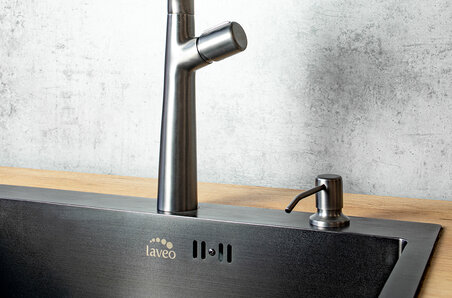
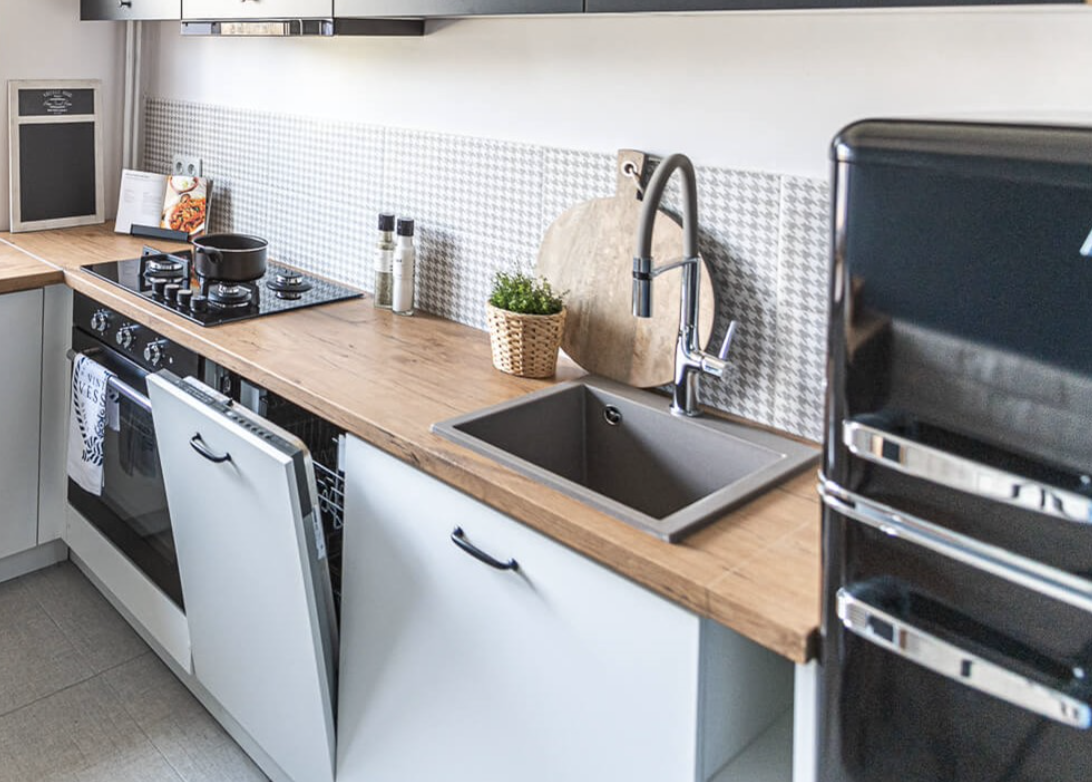
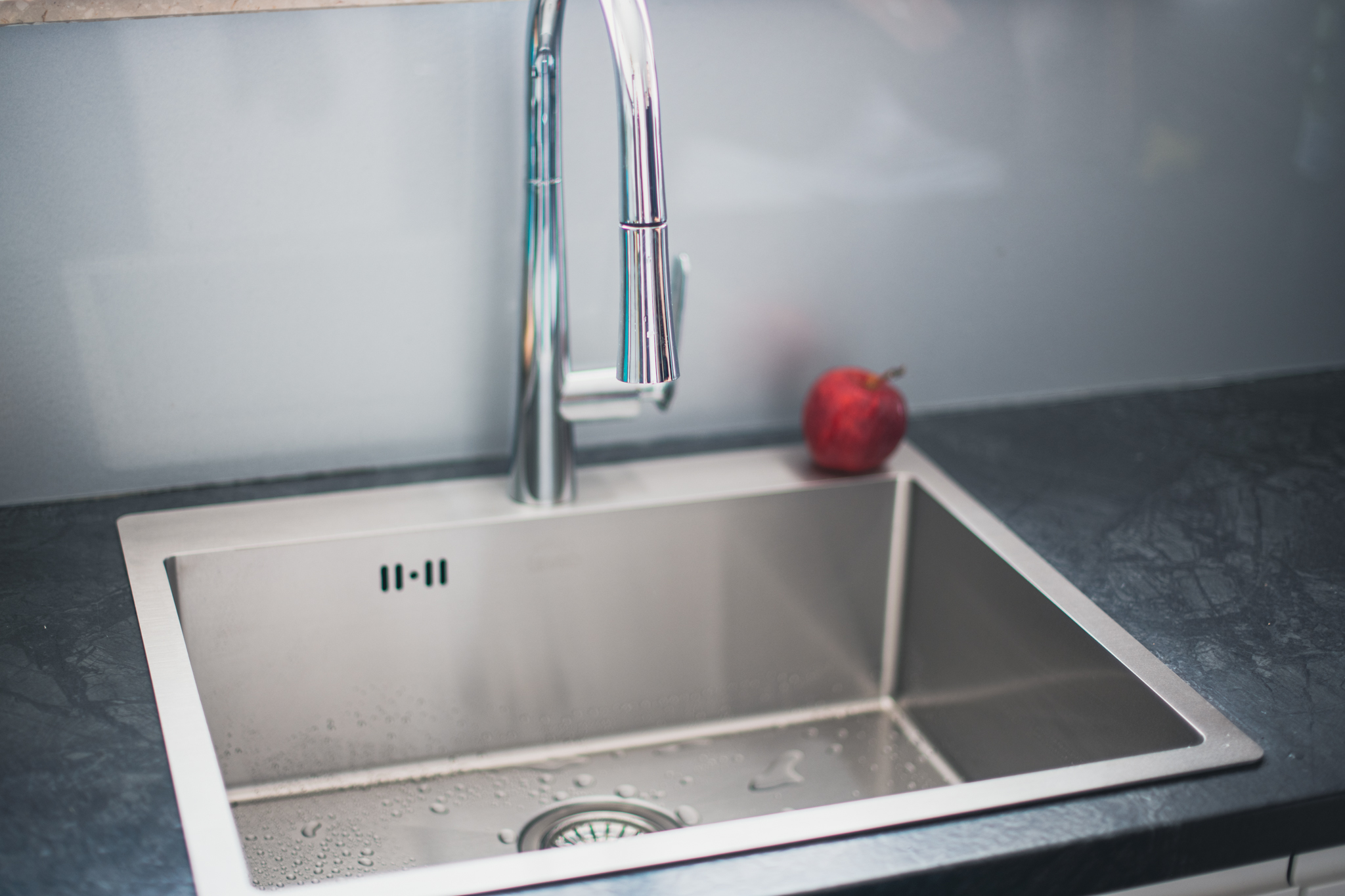
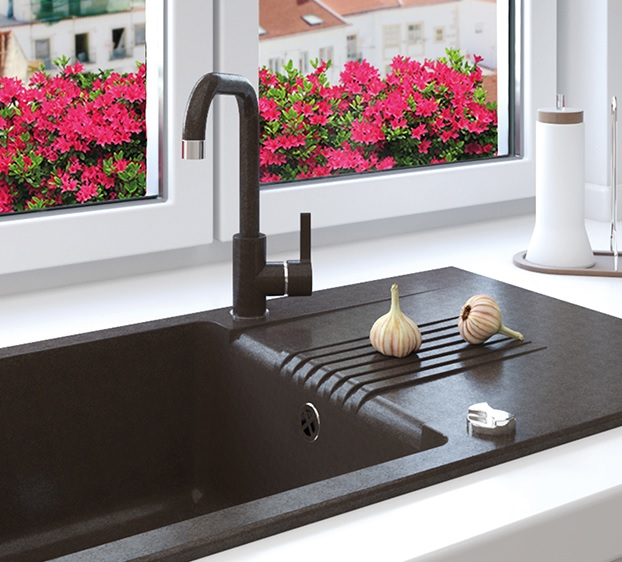 Popular
Popular 

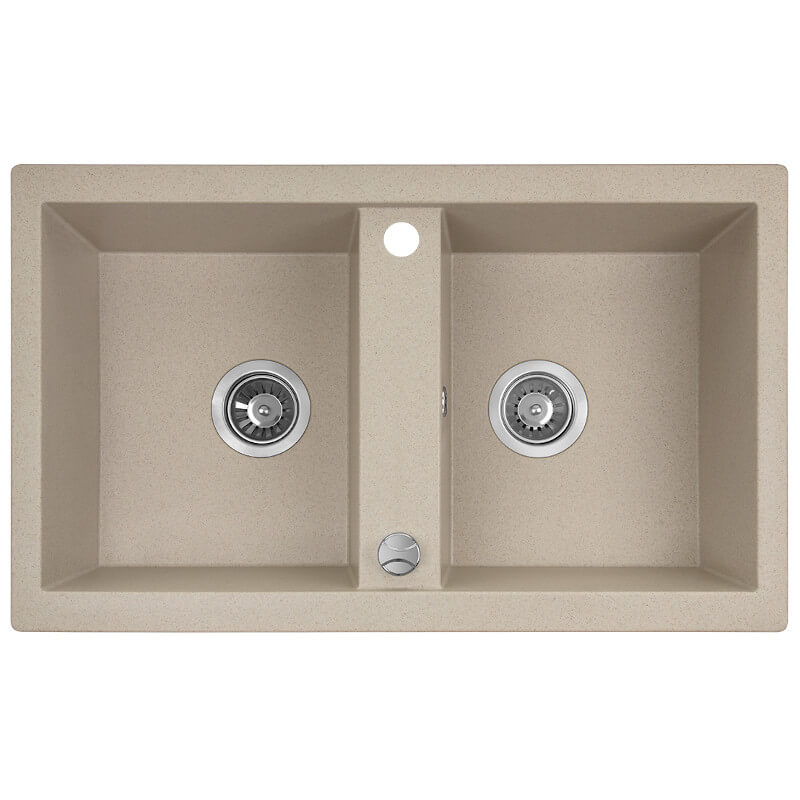
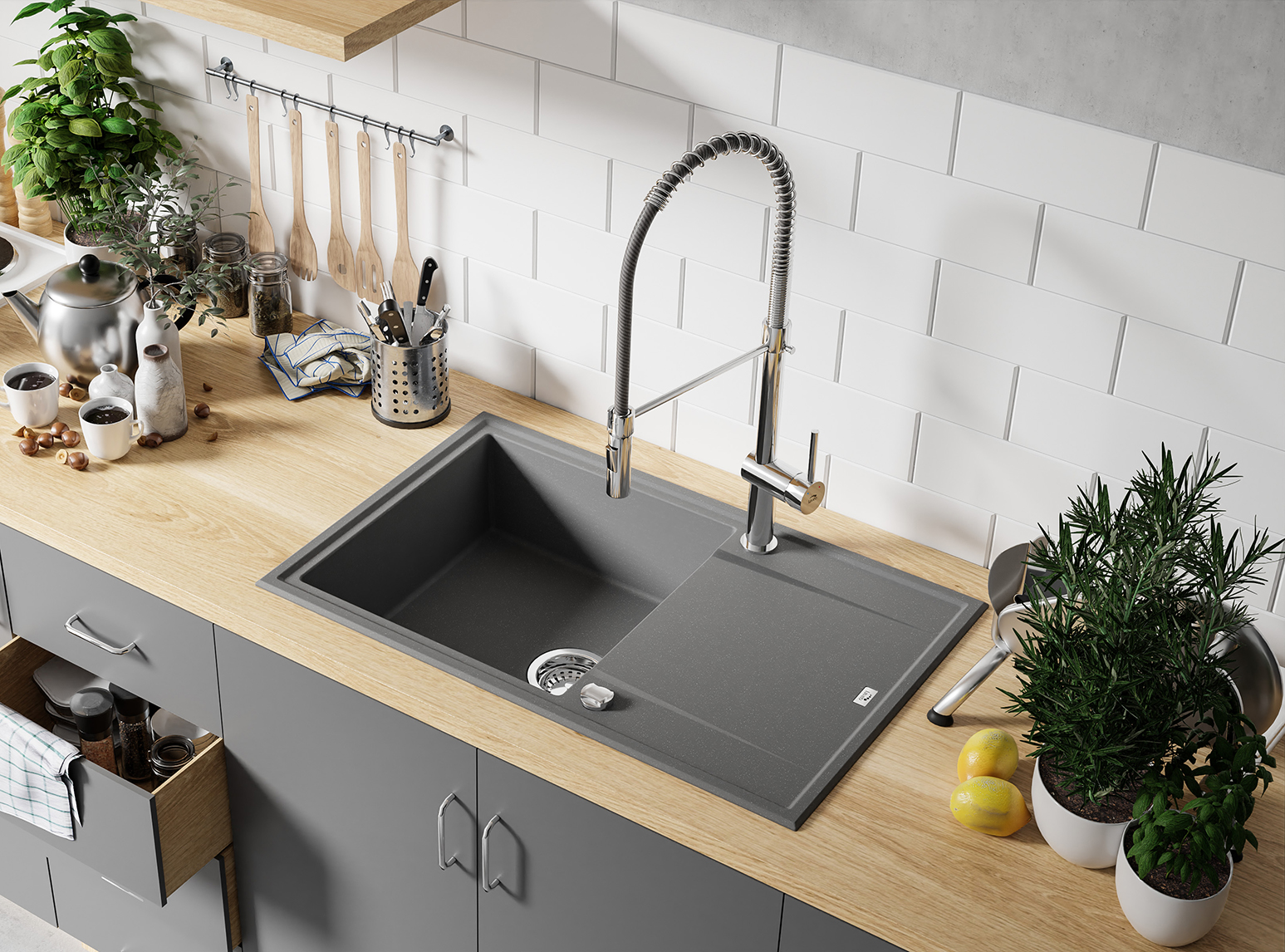

 It is worth mentioning that a sink requires additional equipment. The basic piece is a siphon that connects the sink to the sewage system. Choosing the
It is worth mentioning that a sink requires additional equipment. The basic piece is a siphon that connects the sink to the sewage system. Choosing the 